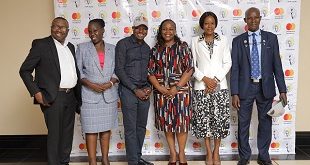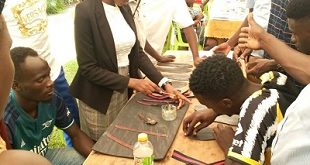
By Flavia Nassaka
Experts say better targeted messages can cause behaviour change
On December 23, when most people were preparing to celebrate Christmas, Teopista Mbabazi, was in agony. The 42-year woman was burying her only daughter. She was only 17-years old and had died of AIDS.She told The Independent that it had never crossed her mind that her daughter could be infected with HIV, the virus that causes AIDS.
Even when a friend recommended a test, I never considered it because I had never heard or seen Liz with a boyfriend,” she said. When the test was finally done, it was too late. The teenager died just three months after being initiated on Anti Retroviral Therapy (ART). She added to an ugly statistic of 300 adolescents who die every day around the world due to HIV related diseases.
The figures of deaths in Uganda are not easy to establish. But the Uganda AIDs Commission (UAC) figures show that 110,000 adolescents – young people aged between 10 and 19 years old – are infected with HIV. According to the same report, HIV/AIDS is now the leading cause of death among this age group.Uganda is one of the countries with the highest burden of HIV in the Sub Saharan Africa, with an estimated 1.5 million of its 36 million people living with the virus. Since 77% of the population is youth – people aged between 12 and 30 years old – they inevitably comprise a large percentage of those infected. And the figures from the Uganda AIDS Commission are grim. They show the rate of infection rising steeply from the age of 15 years when most youth engage in sex for the first time. Girls are more infected than boys. At 15 years, for example, about 1.5% of girls are HIV positive. However, just two years later – when the girls are 17 years old, the HIV prevalence in that segment swells to 5.1%. By the time girls reach 24 years of age, the HIV prevalence in their segment is 7%.

The boys are equally hit by HIV, but at a slightly slower pace. Many of the boys start engaging in sexual activity much later at age 17. But by 15 years old, up to 1.8% of the boys are infected. By the time they are 24 years, the HIV prevalence in their segment is 3.6%. These big numbers are causing concern as Uganda has been registering successes in cutting infections among children; especially with the success of Prevention of Mother-to-Child Transmission (PMTCT) programme. In fact, experts attribute the recent increase in HIV infection figures in the country to more adolescents acquiring HIV. And the message is simple; the country must act quickly to save its adolescent children.
Why the increase?
Globally, according to the United Nations Programme on HIV/AIDS (UNAIDS), 40% of all new infections happen to young people with females being the majority.
Uganda Youth and Adolescents Health Forum’s Team Leader, Patrick Mwesigye says this rate may even double if appropriate measures are not taken since children are increasingly engaging in sex at a younger age. Apparently, the latest figures now show that 36% of children now have their first sexual encounter between age 13 and 16. This puts them at greater risk of infection.
“The number of adolescents who have acquired HIV from their parents is not so big. Adolescence is a critical stage where young people tend to feel a sense of immortality and are not scared of taking risks. They end up getting infected as they experiment,” says Mwesigye. He says many young people, especially in secondary schools and tertiary institutions, have multiple sex partners.
Godfrey Walakira, the Training and Development Manager at Straight Talk Foundation Uganda, agrees. He says there has not been comprehensive sexuality education both at school and home level.
“Parents rarely talk to their children about sex yet the reality is that they are sexually active. It means they are doing it without appropriate guidance,” he says.
He backs the findings of the 2015 Situation Analysis of Children in Uganda by UNICEF which found that adolescent girls are more infected because they face multiple vulnerabilities as a result of disempowerment both at individual, family and community level.
“Most of the time, they don’t choose when to have sex or whether or not to use condoms,” says Walakira.
He said even those who are already living with HIV are not helped because they, like other adolescents, must deal with developing sexuality but they are not supported. They face challenges of disclosure, adherence to drugs and how to prevent transmitting HIV to their sexual partners.
For Dr. Nelson Musoba, the Director of Planning and Strategic Information at UAC, funding is a big problem. He says most of the funding for HIV comes from donors who tag the money to be spent on a specific activity and adolescent health is still underfunded.
In 2015, most donor money went into programmes such as PMTCT and buying drugs. For instance from October 2014 to September 2015, US$387 million of U.S. President’s Emergency Plan for AIDS Relief (PEPFAR) funds went into improving access to treatment and PMTCT.
The only visible campaign done so far to tackle HIV among young people is the recently launched “DREAMS’ (Determined, Resilient, Empowered, AIDS free, Mentored , Safe) campaign by PEPFAR where $210 million was set aside to reduce new HIV infections in adolescent girls and young women in up to 10 countries with high HIV prevalence in Africa.
In Uganda, the campaign is already going on in 10 high risk districts. It aims to provide adolescents and young women with necessary information needed to prevent infection and for those already infected to live healthy.
Crafting right messages
Musoba told The Independent that tackling HIV must focus on behavioral change but targeting messages to the right audiences is not easy because different messages target different people and can at times be misunderstood.
A good example of the message targeting young people is the new TV series called `Shuga’.
“Many young people I work with are excited about the new TV series – Shuga which was premiered last year. This is both entertainment and information. The scenes can be easily related with by adolescents,” says Mwesigye.
The ministry of health has also introduced `youth friendly corners’ in some health facilities where issues to do with young people are exclusively handled. But these are only available in a few hospitals. The UNICEF report notes that only 15% of health facilities across the country provide these services yet they can be a great avenue for young people to open up about their health since many shy away from seeking certain health services offered in open-to-all clinics for fear of being seen by either their peers or their parents.
But beyond availing medicine and information, Walakira says health workers need to be trained on how to handle issues of young people in a way that can build trust in them.
“They could learn to engage young people in a non judgmental way and also teach them to own their challenges and learn to live with them,” he says.
Meanwhile, UNAIDS has set a target that by 2020, 90% of the people should be knowing their HIV status, 90% of those living with the virus should be on treatment, and 90% of those on treatment will have their virus maintained at undetectable levels. But, as it is now, it’s quite unclear if that can be achieved in Uganda in the remaining four years. Many adolescents do not know their HIV status, only half of those who require treatment can access it, and worst of all, those who are on treatment sometimes skip their doses because of frequent stock outs.
 The Independent Uganda: You get the Truth we Pay the Price
The Independent Uganda: You get the Truth we Pay the Price


